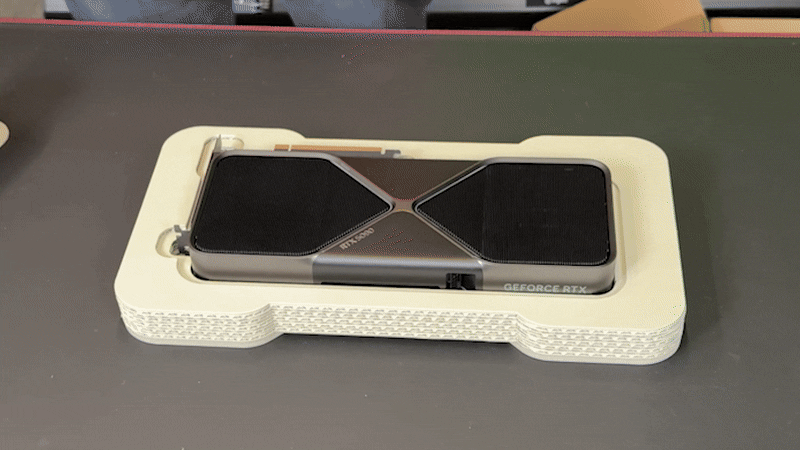Can AI Become the Savior or the Downfall of Architecture?
Written by Pranav, on 2024-05-10 The architectural profession has witnessed numerous transformations over the decades, from the transition from analog to computer-aided design (CAD) to the current emergence of artificial intelligence (AI). Each technological leap has brought forth both excitement and apprehension, raising questions about its potential impact on the creative process and the future of architecture itself. AI: A Threat or an Opportunity? As AI technology advances at an unprecedented pace, architects find themselves at a crossroads. Some view AI as a threat that could stifle human creativity and relegate architects to mere spectators in the design process. Others, however, see it as a powerful tool that could reinvigorate the profession, empowering architects to explore uncharted realms of design and innovation. The Fear of Losing the Human Touch One of the primary concerns surrounding AI in architecture is the fear of losing the human touch. The act of putting pen to paper has long been seen as a meditative process that fosters deep contemplation and consideration. The advent of CAD expedited the design and representation process, leading some to believe that architecture became less thoughtful and more focused on exaggerated forms and stunning visualizations than on the buildings themselves. However, AI technology presents a different paradigm altogether. Unlike CAD, which primarily revolutionized the production and representation of architecture, AI unlocks new dimensions of what architecture can achieve. It repositions the role of the architect from a mere decision-doer to a decision-maker, reintroducing a sense of provocation and artistic vision to the design process. Embracing AI in Architectural Workflows Architects like Shail Patel and Tina Marinaki have embraced AI as an integral part of their workflow, using tools like Midjourney to create conceptual experimentations that challenge conventional architectural norms. Their designs are not mere renderings but rather explorations of complex geometries, intricate patterns, and innovative material combinations that were once unimaginable. These AI-generated works transcend the constraints of reality, offering a canvas for architects to express their artistic vision in unexpected and thought-provoking ways. Tailoring Solutions with AI Moreover, AI enables architects to tailor designs to specific environmental conditions, cultural contexts, and user preferences with unparalleled precision. By leveraging AI's capabilities, architects can create truly bespoke and contextualized architectural solutions that prioritize sustainability, cultural sensitivity, and user experience. Liberating Creativity One of the significant advantages of AI in architecture is its ability to handle repetitive tasks, freeing up architects to focus on more impactful and creative endeavors. Instead of being bogged down by window schedules, building regulations, and technical checklists, AI allows architects to think, design, and visualize in a more strategic manner, pursuing innovative solutions to real-world challenges. However, it is crucial to acknowledge that AI is not a panacea for all architectural challenges. While it can enhance creativity and aid in the exploration of unconventional design concepts, the human element remains indispensable. Architects must exercise their expertise, judgment, and ethical considerations to ensure that AI-generated designs are not only visually striking but also functional, sustainable, and aligned with the needs of the communities they serve. Ethical Considerations and Responsible Usage The integration of AI into the architectural workflow also raises important questions about intellectual property, ethical considerations, and the potential for bias in AI systems. As with any transformative technology, it is essential to approach AI with a critical eye and establish clear guidelines and protocols to mitigate potential risks and ensure responsible usage. Finding the Balance In conclusion, the advent of AI in architecture presents both opportunities and challenges. While some may view it as a threat to human creativity, others see it as a powerful tool that could reinvigorate the profession and propel it towards new frontiers of innovation. By embracing AI as a collaborator rather than a competitor, architects can harness its potential to explore unconventional design concepts, tailor solutions to specific contexts, and ultimately reclaim their role as decision-makers in the architectural process. The future of architecture lies not in rejecting AI outright or blindly embracing it, but in striking a balance between human creativity and technological advancement. By combining the boundless imagination of human architects with the computational power and data-driven insights of AI, the profession can elevate itself to new heights, creating designs

Written by Pranav, on 2024-05-10
The architectural profession has witnessed numerous transformations over the decades, from the transition from analog to computer-aided design (CAD) to the current emergence of artificial intelligence (AI). Each technological leap has brought forth both excitement and apprehension, raising questions about its potential impact on the creative process and the future of architecture itself.
AI: A Threat or an Opportunity?
As AI technology advances at an unprecedented pace, architects find themselves at a crossroads. Some view AI as a threat that could stifle human creativity and relegate architects to mere spectators in the design process. Others, however, see it as a powerful tool that could reinvigorate the profession, empowering architects to explore uncharted realms of design and innovation.
The Fear of Losing the Human Touch
One of the primary concerns surrounding AI in architecture is the fear of losing the human touch. The act of putting pen to paper has long been seen as a meditative process that fosters deep contemplation and consideration. The advent of CAD expedited the design and representation process, leading some to believe that architecture became less thoughtful and more focused on exaggerated forms and stunning visualizations than on the buildings themselves.
However, AI technology presents a different paradigm altogether. Unlike CAD, which primarily revolutionized the production and representation of architecture, AI unlocks new dimensions of what architecture can achieve. It repositions the role of the architect from a mere decision-doer to a decision-maker, reintroducing a sense of provocation and artistic vision to the design process.
Embracing AI in Architectural Workflows
Architects like Shail Patel and Tina Marinaki have embraced AI as an integral part of their workflow, using tools like Midjourney to create conceptual experimentations that challenge conventional architectural norms. Their designs are not mere renderings but rather explorations of complex geometries, intricate patterns, and innovative material combinations that were once unimaginable. These AI-generated works transcend the constraints of reality, offering a canvas for architects to express their artistic vision in unexpected and thought-provoking ways.
Tailoring Solutions with AI
Moreover, AI enables architects to tailor designs to specific environmental conditions, cultural contexts, and user preferences with unparalleled precision. By leveraging AI's capabilities, architects can create truly bespoke and contextualized architectural solutions that prioritize sustainability, cultural sensitivity, and user experience.
Liberating Creativity
One of the significant advantages of AI in architecture is its ability to handle repetitive tasks, freeing up architects to focus on more impactful and creative endeavors. Instead of being bogged down by window schedules, building regulations, and technical checklists, AI allows architects to think, design, and visualize in a more strategic manner, pursuing innovative solutions to real-world challenges.
However, it is crucial to acknowledge that AI is not a panacea for all architectural challenges. While it can enhance creativity and aid in the exploration of unconventional design concepts, the human element remains indispensable. Architects must exercise their expertise, judgment, and ethical considerations to ensure that AI-generated designs are not only visually striking but also functional, sustainable, and aligned with the needs of the communities they serve.
Ethical Considerations and Responsible Usage
The integration of AI into the architectural workflow also raises important questions about intellectual property, ethical considerations, and the potential for bias in AI systems. As with any transformative technology, it is essential to approach AI with a critical eye and establish clear guidelines and protocols to mitigate potential risks and ensure responsible usage.
Finding the Balance
In conclusion, the advent of AI in architecture presents both opportunities and challenges. While some may view it as a threat to human creativity, others see it as a powerful tool that could reinvigorate the profession and propel it towards new frontiers of innovation. By embracing AI as a collaborator rather than a competitor, architects can harness its potential to explore unconventional design concepts, tailor solutions to specific contexts, and ultimately reclaim their role as decision-makers in the architectural process.
The future of architecture lies not in rejecting AI outright or blindly embracing it, but in striking a balance between human creativity and technological advancement. By combining the boundless imagination of human architects with the computational power and data-driven insights of AI, the profession can elevate itself to new heights, creating designs that not only captivate the eye but also address the pressing challenges of our time.
What's Your Reaction?
































